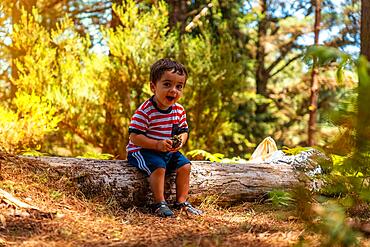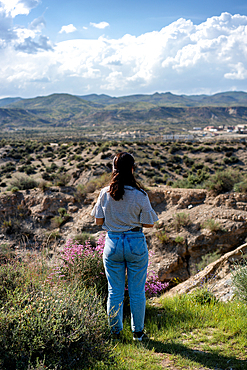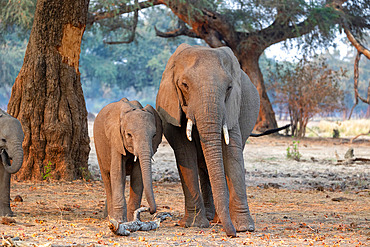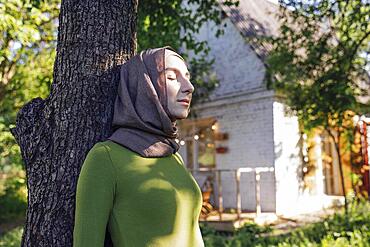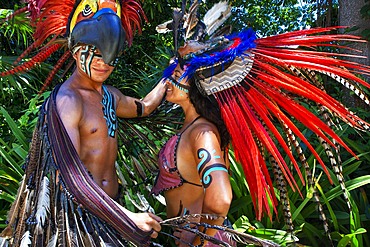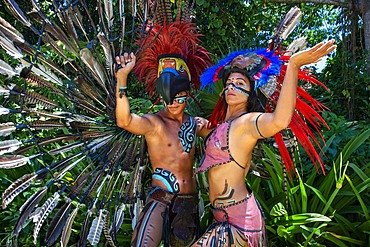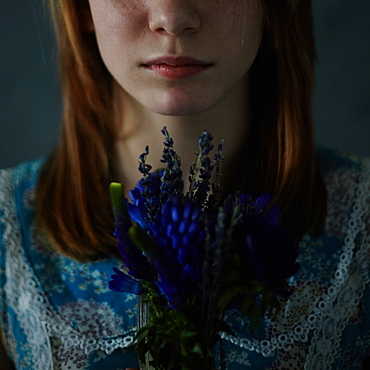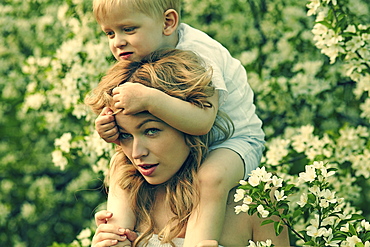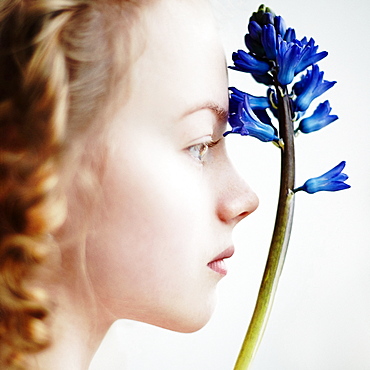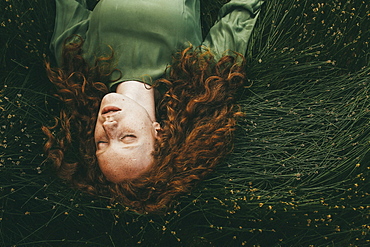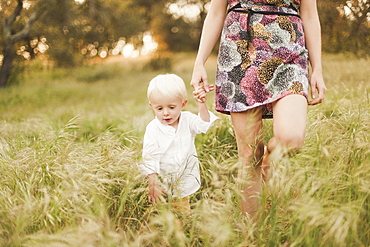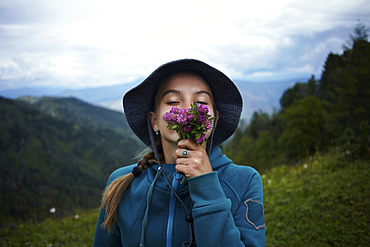Recent searches
Loading...
743-150 - Young African elephant, Loxodonta africana, Addo, South Africa, Africa
832-404498 - Woman cuts peeled banana on cutting board in the kitchen
832-404499 - A woman mixing fruits and berries in a blender for smoothie
832-404414 - Portrait of a boy sitting on a tree in nature next to pine trees smiling, Madeira. Portugal
832-404386 - Young entrepreneur of black race and afro hair making a video call of a work meeting, black jacket and pink dress, teleworking, new normal, sitting on a blue sofa and some green plants in a hotel
1116-52883 - Portrait of a young, male lion (Panthera leo) standing on savanna, staring at the camera, licking his lips, Laikipia, Kenya
1116-52882 - Close-up of a young lion (Panthera leo) sitting in the grass, turning head, Laikipia, Kenya
1116-52863 - Young African elephant (Loxodonta africana) throwing sand over head in Chobe National Park, Botswana
832-403059 - Young couple in love, white Cycladic house with blue door and pink bougainvillea, with sun star, picturesque alleys of Lefkes village, Paros, Cyclades, Greece, Europe
832-403058 - Young couple in love, white Cycladic house with blue door and pink bougainvillea, with sun star, picturesque alleys of Lefkes village, Paros, Cyclades, Greece, Europe
1346-187 - Young woman looking at Tabernas desert on a sunny day, Almeria, Andalusia, Spain, Europe
1346-188 - Young woman looking at Tabernas desert on a sunny day, Almeria, Andalusia, Spain, Europe
832-402125 - Master gardener teaching student girl flower nursery in greenhouse
832-402126 - Portrait of master gardener teaching schoolgirl flower nursery in greenhouse smiling
832-402121 - Happy female customer buying flowers from a gardener in a nursery inside the greenhouse
832-402119 - Happy black ethnic woman flower and plant nursery worker cutting plants in greenhouse
832-402120 - Black ethnic female flower nursery worker cutting the plants in the greenhouse
832-402118 - Flower greenhouse nursery gardeners working, smiling agriculture taking care of flowers
832-401742 - Pied French Bulldog dog puppy with woven flower collar
832-401430 - Pretty young woman in white bikini walking barefoot on the sea shore on tropical beach. Summer vacation and relax concept
832-401429 - Back view of pretty young woman relax and enjoy sea standing under palm tree on tropical beach. Summer vacation concept
832-401428 - Pretty young woman in white bikini walking barefoot on the sea shore on tropical beach. Summer vacation and relax concept
832-401427 - Young beautiful woman sunbathe and relax on tropical beach. Summer vacation concept
832-401424 - Young woman drinking coconut juice and relaxing on the beach on summer vacation standing under palm tree
832-401425 - Young beautiful woman sunbathe and relax sitting alone on tropical beach. Summer vacation concept
832-401423 - Pretty young woman enjoy her tropical beach vacation standing under palm tree. Summer concept
832-401422 - Pretty young woman enjoy her tropical beach vacation standing under palm tree. Summer concept
832-401421 - Pretty young woman in white bikini enjoy her tropical beach vacation. Beautiful woman rest under palm tree on the sea. Summer concept
832-401418 - Pretty young woman in white bikini enjoy her tropical beach vacation. Beautiful woman rest under palm tree on the sea. Summer concept
832-401415 - Beautiful woman relax on tropical sandy beach with coconut. Vacation concept, summer background
832-401410 - Young beautiful woman sunbathe and relax on tropical beach. Summer vacation concept
832-401409 - Beautiful young woman enjoy coconut drink and relax on tropical beach with palm tree. Summer vacation concept
832-401408 - Beautiful woman relax on tropical sandy beach with coconut. Vacation concept, summer background
832-401407 - Beautiful young woman enjoy coconut drink and relax on tropical beach with palm tree. Summer vacation concept
860-291687 - African Savannah Elephant or Savannah Elephant (Loxodonta africana), eat fruits of Winter Thorn (Faidherbia albida), Lower Zambezi natioinal Park, Zambia
832-400434 - Close-up of radishes planted in an organic vegetable garden
832-400432 - Close-up of radishes planted in an organic vegetable garden
832-400390 - Happy black woman entrepreneur standing in plant store selling fresh flowers to client. Young blond girl buy a fresh bouquet from florist. Smiling african woman botanist, selling flowers
832-400372 - Happy plant lady. Young Afro American woman plant lover taking care of houseplant. Girl watering a potted plant with happy smile
832-400355 - Muslim teen girl hugging a tree. Close up portrait of a young female in a hijab and casual clothes in the park. Protecting the environment and caring for plants concept
832-400329 - Happy plant lady. Young Afro American woman plant lover taking care of houseplant. Girl watering a potted plant with happy smile
832-400325 - Muslim young attractive gardener at work, take care of green plants, working in retro garden shop
832-399719 - Assortment of appetizers and tapas with red wine on black background
832-399739 - Assortment of appetizers and tapas with red wine on black background
832-399738 - Assortment of appetizers and tapas with red wine on black background
832-399786 - Happy Mothers Day - sweet macarons and glass of rose sparkling wine with flowers in pink tone
832-399655 - Blue French Bulldog dog puppy with woven flower collar sitting in front of pink background
832-399150 - Full body portrait of cute little girl with spring flowers in hands
832-399080 - A young blonde girl in a hat and sunglasses breathing pure haire in the spring in a park in the city, nature, lying on the grass next to daisies, part copy space
832-399079 - A young blonde girl in a hat unwinding and breathing pure hair in the spring in a park in the city, nature, lying on the grass next to daisies, looking at the camera
832-398501 - Portrait young woman with headphones jumping9
832-398466 - young african american musician celebrating international jazz day3
832-398463 - colorful shoelaces arrangement white background
832-398430 - front view little girl measuring sprouts growing home. High resolution photo
1353-389 - Young woman walking the Anglesey Coast Path in summer, near Cemaes, Isle of Anglesey, North Wales, Wales, United Kingdom, Europe
1353-386 - Young woman walking the Anglesey Coast Path in summer, near Cemaes, Isle of Anglesey, North Wales, Wales, United Kingdom, Europe
1350-6608 - Mexican aztec dress gods at Grand Palladium White Sand Resort and Spa in Riviera Maya, Yucatan Peninsula, Quintana Roo, Caribbean Coast, Mexico.
Aztec clothing was generally loose fitting and did not completely cover the body. When the Spanish arrived in Mexico, the people were surprised to see them in their full armour, with only their faces exposed.
Aztec clothes were generally made of cotton (which was imported) or ayate fiber, made from the Maguey Cactus (also called the Century Plant or American Aloe). Women would weave the fibers into clothing, a task girls were taught as young teenagers. Because of their vast trading network, the Aztecs were able to make use of a beautiful array of dyes, creating the brilliant
1350-6595 - Mexican aztec dress gods at Grand Palladium White Sand Resort and Spa in Riviera Maya, Yucatan Peninsula, Quintana Roo, Caribbean Coast, Mexico.
Aztec clothing was generally loose fitting and did not completely cover the body. When the Spanish arrived in Mexico, the people were surprised to see them in their full armour, with only their faces exposed.
Aztec clothes were generally made of cotton (which was imported) or ayate fiber, made from the Maguey Cactus (also called the Century Plant or American Aloe). Women would weave the fibers into clothing, a task girls were taught as young teenagers. Because of their vast trading network, the Aztecs were able to make use of a beautiful array of dyes, creating the brilliant
832-398007 - African little girl walking in the farm vegetable garden taking care of plants wearing denim salopette in summertime
832-398006 - African little girl in the farm vegetable garden taking care of plants wearing denim salopette in summertime
832-397760 - Whole lamb marinating in oil rub and rosemary for asado, in Altea La Vella, Alicante, Spain, Europe
832-397782 - Young blue French Bulldog dog wearing a vampire costume cloak sitting in Halloween box surrounded by pumpkin and spider webs
860-290989 - Sumatran Orangutan (Pongo abelii) and young with Durian, North Sumatra
860-290988 - Sumatran Orangutan (Pongo abelii) and young with Durian, North Sumatra
848-2522 - Young White Rhino with mother, Marataba, Marakele National Park, South Africa, Africa
848-2525 - Young White Rhino with mother, Marataba, Marakele National Park, South Africa, Africa
848-2523 - Young White Rhino with mother, Marataba, Marakele National Park, South Africa, Africa
832-397176 - Lion (Panthera leo) two cubs playing in the green bush, Taita Hills Wildlife Sanctuary, Kenya, East Africa, Africa
832-397198 - Lion (Panthera leo) young in the morning and lying cheekily in the green bush in the Taita Hills Wildlife Sanctuary, Kenya, East Africa, Africa
832-397179 - Lion (Panthera leo) young in the morning, lying cheekily in the green bush in the Taita Hills Wildlife Sanctuary, Kenya, East Africa, Africa
832-397186 - Several young female lions (Panthera leo) eating a killed african buffalo (Syncerus caffer) in the bush, Tsavo East National Park, Kenya, East Africa, Africa
1178-43060 - Caucasian teenage girl smelling flowers
1178-43059 - Caucasian teenage girl holding bouquet of flowers
1178-43087 - Caucasian girl examining plants outdoors
1178-43427 - Caucasian mother holding son near flowers in tree
1178-43398 - Multi-generation Black family hugging in military cemetery
832-396864 - Beautiful young adult woman enjoying glass of wine tasting walking in the grape vineyard
832-396945 - Girl doing yoga bird of paradise, a girl doing yoga outdoors, A woman doing balance yoga, person doing yoga Svarga Dvijasana
832-396865 - Beautiful young adult woman enjoying glass of wine tasting in the vineyard
832-396952 - Woman doing warrior III yoga outdoors, girl doing Virabhadrana III yoga, young woman doing yoga outdoors, warrior III yoga concept
860-290535 - Woman planting a citrus fruit in the ground. Planting a young yuzu.
1178-42785 - Caucasian girl smelling flowers on mountain range
1357-15 - Young couple on romantic walk, United Kingdom, Europe
1357-17 - Young couple on romantic walk, United Kingdom, Europe
1178-39280 - Caucasian boy walking in field of wheat
1178-40996 - Caucasian mother and daughter planting seedling in garden
1178-42362 - Smiling Caucasian girl pointing finger and holding flowers
1178-41811 - Caucasian baby girl playing with towels on clothesline



